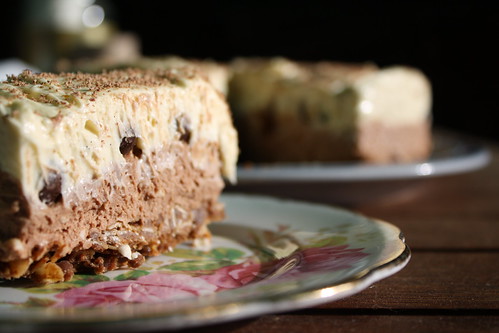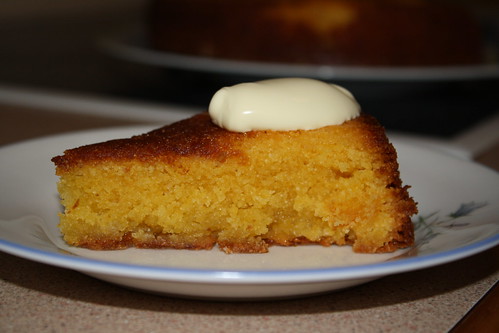This is definitely a dish for the health conscious. Or perhaps not, becaused this is really like eating a giant pile of chocolate spread with a giant pile of puff pastry. And this means it’s absolutely delicious – but small servings are required!
As a dessert, this chocolate and hazelnut pithivier, from the April issue of UK Delicious is a bit of a winner. It’s quick to make, it doesn’t need to be served hot so you can make it in advance and (better yet) you can freeze it and have it as a standby dessert. And it’s so rich it will go a long way and you don’t need any special accompaniments (although good fresh cream won’t go astray).
If you’re keen – make your own puff pastry. Otherwise, have to hand 2 sheets of ready made. You’ll need to cut 24 and 26 cm diameter circles from these respectively. Put the smaller circle of pastry on a non stick baking sheet and preheat your oven to 180°C fan.
Making the filling does rather require a food processor – or a lot of patience. The original recipe specifies 150g of blanched hazelnuts. I don’t know if blanched hazelnuts are more readily accessible in the UK than Australia, but when I make this again I’ll be using 150g of ground hazelnuts. Otherwise you’re left with the task of roasting and then peeling the hazelnuts and peeling hazelnuts is a task best left to someone else, as far as I’m concerned!
So – take your 150g of hazelnuts and, if they’re not already ground, whizzy them up with 150g of good quality dark chocolate, 125g of golden caster sugar and 20g of cocoa powder until you get a fine crumbly mix. To this add 25g of unsalted butter, 2 egg yolks and 2 tbsp of dark rum (there’s no reason why a liqueur such as Frangelico wouldn’t work well here). The alcohol is, of course, optional and it’s best not to go mad with it – stick to the 2 tbsp!
Whizzy this up again and you will end up with a firm (and extremely tasty) paste.
Put this paste in the centre of your pastry base, spreading it out evenly and leaving about 1cm around the edge. Take one of your left over egg whites, lightly whisk it and brush this margin with it, before topping the pithivier with the second disk of pastry. Press down carefully at the edge, ensuring there is no air left in the middle (you want to push the pastry down around the filling).
If you can chill the pithivier at this point – that’s a good thing. Leave it in the fridge for about 30 minutes.
When you’re ready to cook, score the top of the pithivier with a swirled spoke pattern and then brush with egg white. Bake for 40 minutes. Keep an eye on it while it’s cooking – if the pastry starts to brown too quickly, lower the temperature a little.
Best served at room temperature – if you can wait that long!



